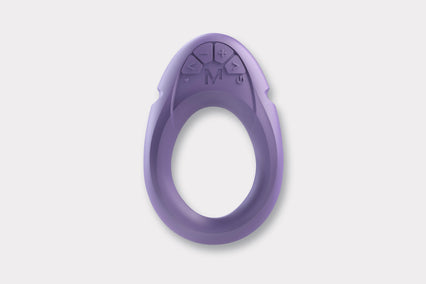Ah, sex - that beautiful, magical dance of intimacy that's pure pleasure. Well, not always. “How to avoid painful sex” is a question on many minds, because sometimes, what's meant to be a tantalizing tango can feel more like a torturous twist.
Painful sex, clinically known as dyspareunia, is an issue many silently struggle with because addressing the topic can be daunting, confusing, and come with a lot of misinformation. To help ease any discomfort behind closed doors, here’s a breakdown on how to avoid painful sex so you and your partner can enjoy intimacy again.
What causes pain during sex in women?
Painful sex is a genuine issue affecting many people, especially women. According to the American College of Obstetricians and Gynecologists (ACOG), 3 out of 4 women experience painful sex at some point in their lives.
Understanding what causes or contributes to your experience of painful sex will help you figure out how to avoid painful sex and find a treatment option that works for you. Remember, everyone is unique, and the reasons for pain can vary widely. Pain during sex can have both physical and emotional factors, and it can be tough to distinguish between the two, since they often intertwine and intensify each other.
Physical causes of pain during sex
- Conditions affecting vaginal health: Conditions like vaginismus (involuntary muscle contractions) and vulvodynia (chronic vulvar pain), ovarian cysts, fibroids, and endometriosis (when tissue that lines the uterus grows outside the uterus) can cause or contribute to painful sex. Additionally, if you’ve had surgery or injury involving the genital area or pelvis, this can also lead to issues with pain during sex.
- Vaginal infections and STIs: Things like bacterial vaginosis, gonorrhea, yeast infections, trichomoniasis, viral vaginitis, certain skin disorders, inflammation, UTIs, sexually transmitted infections, and Pelvic Inflammatory Disease (PID), as well as allergic reactions, can all contribute to pain during sex.
- Hormonal changes and other physical factors: Hormonal fluctuations, like lower levels of estrogen during menopause causing vaginal dryness, and other physical factors, such as physical trauma, inflammation, and the side effects of cancer treatments, can cause discomfort during intercourse.
Emotional causes of pain during sex
- Psychological stress and social influences: Emotional factors like stress, anxiety, depression, fear, guilt, or shame about sex, cultural norms, and relationship dynamics such as conflict or lack of trust can make sex painful.
- Past trauma and abuse: A history of abuse or past trauma can add an extra layer that exacerbates or contributes to discomfort during sex. These factors can combine with physical causes and make it challenging to differentiate between the physical and emotional issues that contribute to pain during sex.
Acknowledging and identifying the reasons behind pain during sex is the initial step towards reclaiming pleasure during intimacy. It's always recommended to consult a medical professional for an accurate diagnosis and discuss the different treatment options available.
How to reduce pain during sex in women
There are various options available to reduce painful intercourse, from home remedies to hormonal therapies, and even surgery. Before settling on a treatment option, it's important to understand that the treatment should be customized to each person's specific situation. What works for one person may not work for another, so be patient and consider that it might be a combination of things that brings you pain relief.
1. Acknowledge the elephant in the (bed)room
Painful sex should not be ignored, dismissed, or swept under the rug (or bedsheets). It's a genuine issue affecting many people, especially women, and it's crucial to address it head-on. Denial and avoidance won't make the problem go away. So, take a deep breath and acknowledge that an unwelcome guest is crashing your intimate soiree. Recognizing this can be your first step towards finding a treatment option.
2. Communicate with your partner
Discussing painful sex with your partner might not be the most titillating pillow talk, but it's an important conversation you need to have. Open communication is key to understanding each other's needs and finding a solution together. Besides, it’s likely that if your partner knew you were experiencing pain during sex, they would want to help you find a solution. While it’s a daunting conversation, don’t be afraid to be honest and vulnerable with your partner.
3. Spend more time in foreplay
Insufficient arousal is a big contributor to painful sex. It’s natural to be eager to connect, but rushing into sex, especially vaginal penetration, without enough time to warm up may exacerbate your painful sexual experience. Consider if you and your partner are spending enough time in foreplay for you to reach full arousal. Foreplay includes activities like kissing, touching, sensual massage, or any other activity that enhances both arousal and desire. Slow and steady wins the race; so, give your body the time it needs to warm up and become properly lubricated.
4. Use lubricant
Pain during intercourse can be caused by vaginal dryness, which has many causes like hormonal changes from menopause and breastfeeding or can be a side effect of certain medications. Using lubricant can help reduce friction and discomfort caused by vaginal dryness. It moisturizes dry tissue, providing gentle, soft, long-lasting care. Apply the lubricant to the vagina, the penis or vibrator before penetration. If you have endometriosis, try a few lubricants that help with endometriosis, like those enhanced with CBD. If using latex condoms, avoid using oil-based lubricants, and products like petroleum jelly, baby oil, or mineral oil, as they can weaken latex condoms and increase the risk of sexually transmitted infections and breakage.
5. Try relaxation techniques
Anxiety and stress can contribute to pain during sex both mentally and psychologically. If your mind is anticipating pain, your body may unconsciously signal to your muscles to tighten, especially the pelvic floor. Relaxation techniques can do wonders to ease pain during sex. Deep breathing exercises, meditation, or yoga can help reduce anxiety and muscle tension. Pause during sex and do deep breathing exercises until you feel the pain subsides or that you’re relaxed enough to continue.
6. Practice pelvic floor exercises
The pelvic floor being weak or tight, like after childbirth, can contribute to pain during sex. Pelvic floor exercises, like Kegels, can help improve pelvic floor function and general sexual health. These exercises focus on the muscles in the pelvic area that support the bladder, bowel, and uterus. By strengthening these muscles, you can enhance sexual function and make intercourse more comfortable. However, not everyone will need to do Kegels, which is where pelvic floor therapy comes in handy. A specialized physical therapist, usually trained in pelvic health, might use a mix of methods tailored to your needs to focus on muscle relaxation and strengthening techniques, or a combination of both.
7. Set up a sensual environment
Setting up a chill, sensual vibe can amp up your sexual experiences and make you feel more at ease. Add gentle lighting, scented candles, or mellow tunes to create a relaxing mood. A tranquil and pleasurable atmosphere can help you unwind and make intimate moments even more enjoyable.
8. Be patient
Time is an excellent healer, whether it's recovering physically after childbirth or emotionally after trauma. Patience is crucial, so give yourself enough time to heal, both physically and emotionally, before engaging in sexual activities. Rushing things may worsen discomfort and slow down the healing process.
9. Experiment with sex like a mad scientist
Altering positions or techniques can sometimes relieve sexual discomfort. So, channel your inner mad (sex) scientist and start experimenting! Switching up positions can change the angle and depth of penetration, which may help alleviate discomfort.
And don't forget about the power of non-penetrative sex. Activities like sensual massages, kissing, and mutual masturbation can enhance closeness and pleasure while reducing discomfort. Plus, experimenting with your partner can be a fun and exciting way to explore new erotic territories.
10. Use a clinically proven medical vibrator
Switching positions can help, but why not take it a step further by adding some clinically proven medical devices to your sexual routine? Crescendo 2 is a bendable vibrator that’s a clinically proven solution for Genito-pelvic pain/penetration disorder (a fancy way of saying pain during sex). This FDA-registered vibrator is the first of its kind to bend into different shapes, allowing powerful targeted vibrations to increase blood flow and relax the pelvic floor muscles internally and externally. This targeted stimulation helps alleviate discomfort while taking your pleasure to new heights.
If penetration is too painful or lack of lubrication is an issue, try the vibrating ring for women called Legato. This external labia and vulva vibrator is designed to boost arousal and lubrication naturally. It adjusts to fit different vulva shapes so dispersed vibrations can increase blood flow, arousal, and lubrication naturally without the pain or pressure of penetration. Legato also features a large gap in the middle that allows for a male partner, vibrator, or another sex toy to penetrate comfortably.
11. Explore psychological and behavioral therapies
To address negative thought patterns and emotional distress related to painful intercourse, therapies such as cognitive behavioral therapy, sex therapy, and counseling can be effective. These approaches aim to desensitize and reframe the mental and emotional aspects of the condition, helping you cultivate a healthier sexual mindset.
12. Use vaginal dilators
For women who are experiencing pain due to vaginismus, a condition where the muscles in the vagina involuntarily contract, dilators can be a helpful tool. These cone-shaped devices can be inserted into the vagina to help stretch the muscles. Start with the smallest dilator and work your way up to larger sizes over time. It may take several weeks or months to see results, but dilators can be an effective entry pain treatment for vaginismus.
13. Try over-the-counter medications
You can try home remedies and over-the-counter medications for quick relief and managing larger issues that could be contributing to painful sex. For example, if you have a yeast infection, medication can help. Non-steroidal anti-inflammatory drugs (NSAIDs) like ibuprofen or naproxen can help with pain and inflammation related to conditions like endometriosis or pelvic inflammatory disease, which can also cause sex to feel painful. CBD products can also provide a non-prescription alternative for pain and inflammation. But remember, it's always best to consult with a healthcare professional before trying new products.
14. Consider hormonal treatments
Hormone fluctuations can contribute to the experience of painful sex. When it comes to lubrication, issues related to menopause and postpartum recovery, hormonal therapies can be helpful. For postmenopausal women, doctors often prescribe topical estrogen. These treatments are designed to balance hormonal levels and ease the symptoms associated with these changes. Like any medication, it's important to talk to a healthcare provider to understand hormonal treatments' potential benefits and risks.
15. Address underlying health conditions with medications
Sometimes home remedies just aren’t enough, especially if you have an underlying health condition that is contributing to painful sex. FDA-approved drugs like ospemifene and prasterone are commonly used to treat dyspareunia. Certain types of antidepressants, like selective serotonin reuptake inhibitors (SSRIs), can help with chronic pelvic pain and related sexual dysfunction. As always, talk to your doctor about different treatment options.
16. Consider surgical options
Sometimes, if structural issues are the main culprit behind painful intercourse, surgery might be needed. This option is considered when other treatments haven't given satisfactory results. Afterward, supportive physical therapy is typically recommended to ensure the best recovery and function.
17. Seek professional help
If you've tried all the above and still feel pain during sex, it's time to consult a professional - and by that, we mean a medical professional, physical therapist, certified sex therapist or a combination of health professionals. They can perform a pelvic exam to identify the underlying cause of your discomfort and recommend appropriate treatment options. There's no shame in seeking help; it's a sign of strength and wisdom. So, arm yourself with knowledge and take control of your sexual well-being.
Takeaway
Sex should be a source of joy, intimacy, and connection - not discomfort or pain. If you're experiencing pain during sex, know that you're not alone, and there’s no need to suffer in silence. Addressing the underlying causes, whether physical or emotional, is key to reclaiming your pleasure. And there are many solutions within reach, from engaging in more foreplay, consulting with a healthcare professional, or using clinically proven solutions like the medical vibrator Crescendo 2. Everyone deserves a pain-free and fulfilling intimate life - don’t hesitate to take the steps to make that your reality.












































